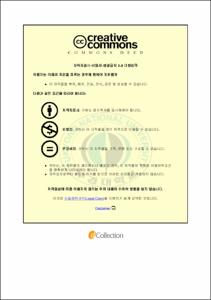TPH removal of the landfarming process using indigenous microorganisms in the diesel contaminated soil
- Alternative Title
- 토착미생물을 이용한 토양경작법의 디젤 오염토양 내 TPH 제거
- Abstract
- Batch experiments using indigenous and commercialized adventive microorganisms were performed to investigate the feasibility of the landfarming process for the diesel contaminated soils. In batch experiments, TPH removal efficiencies of commercialized microorganisms were compared with those of indigenous microorganisms in landfarming process. The study area was located in 'Camp Hialeah', Busan, Korea, which had been used for US military army since 1950. Soils were sampled by using a backhoe at two sites (A and C site) for the experiments and their TPH concentrations were determined as 2,881 ㎎/㎏ and 5,715 ㎎/㎏, respectively, which were higher than Korea Soil Pollution Warning Limit (500 ㎎/㎏). The main pollutant in the study area was determined to a diesel. Indigenous microorganisms having high TPH degradation activity were isolated from the A and C site for the experiments. By 16S rRNA gene sequence analysis, they were identified as Arthrobacter sp., Burkholderia sp., Cupriavidus sp. and Bacillus sp., which were used for the landfarming experiments. Two kinds of commercialized solutions cultured with adventive microorganisms were also used for the experiments. Each solution was named as "Oilbug 1010" (from BioSaint Inc., Korea) and "Penazyme" (from Life Science of Suwon University, Korea), respectively. Various landfarming conditions such as the amount of microorganism, water content and the temperature were applied to experiments for the bioavailability change.
In case of soils without additional microorganisms (on the natural attenuation condition), 35 % of initial TPH was removed from the soil by living indigenous microorganisms in contaminated soil for 20 days of the landfarming. When commercialized microorganisms were added into the soil, the average TPH removal efficiencies using "Oilbug 1010" and "Penazyme" were 66 %, and 57 %, respectively, which were higher than that without additional microorganisms. When indigenous microorganisms isolated from the contaminated soil were added into the soil, the average TPH removal efficiency increased up to 77 % after 31 days in the landfarming process. Results suggested that TPH biodegradation efficiency by using isolated indigenous microorganisms was higher than those by using commercialized adventive microorganisms and only by the natural attenuation. According to the average calculation of the biodegradation rates for adventive microorganism and monospermous indigenous microorganism, the remediation goal would reach within 28 ('O' microorganism) and 26 days (Bacillus sp.), respectively. Consequentially, it was demonstrated that the landfarming process adding isolated indigenous microorganisms isolated from the contaminated soils is the successful process to remove TPH from the diesel contaminated site.
- Issued Date
- 2012
- Awarded Date
- 2012. 2
- Type
- Dissertation
- Publisher
- 부경대학교
- Department
- 대학원 지구환경시스템과학부환경지질과학전공
- Advisor
- 이민희
- Table Of Contents
- CHAPTER I. INTRODUCTION 1
CHAPTER II. OBJECTIVE 3
CHAPTER III. BACKGROUND 4
3.1 Outline of the research area 4
3.1.1 History of the study area 4
3.1.2 Geological characteristics 5
3.2 Properties of organic pollutants in the study area 7
3.2.1 Diesel and total petroleum hydrocarbon (TPH) 7
3.2.2 Interaction between organic pollutants and soil matrix 8
3.3 Principle of bioremediation mechanisms 10
3.3.1 Ex-situ landfarming process 10
3.3.2 Biostimulation and bioaugmentation 11
3.3.3 Mechanisms of TPH removal by microorganism 13
CHAPTER IV. EXPERIMENTAL METHODS 16
4.1 Experiment to measure soil properties 16
4.1.1 Sampling of contaminated soil and TPH analysis 16
4.1.2 Physicochemical characteristics of soil 20
4.2 Microbiological analysis 22
4.2.1 Isolation and identification of indigenous microorganisms 22
4.2.2 Enumeration of indigenous microorganisms 23
4.2.3 SEM analysis of isolated indigenous microorganisms 24
4.3 Landfarming batch experiment using commercialized microorganism 25
4.3.1 Experiments with different TPH concentrations using commercialized microorganism cultivated solutions 25
4.3.2 Experiments for the effects of temperature and water content on the landfarming process 29
4.4 Landfarming batch experiment using indigenous microorganisms 30
CHAPTER V. RESULTS AND DISCUSSION 32
5.1 Results of experiment to measure soil properties 32
5.2 Results of bacteriological analysis 36
5.2.1 Isolation and identification of indigenous microorganisms 37
5.2.2 Enumeration of indigenous microorganisms 40
5.2.3 SEM analysis of isolated indigenous microorganisms 42
5.3 Results of landfarming batch experiment using commercialized microorganism cultivated solutions 45
5.3.1 Experiments with different TPH concentrations using commercialized microorganisms cultivated solutions 45
5.3.2 Experiments for the effects of temperature and water content on the landfarming process 49
5.4 Results of landfarming batch experiments using indigenous microorganisms 52
CHAPTER VI. CONCLUSIONS 66
- Degree
- Master
- Appears in Collections:
- 대학원 > 지구환경시스템과학부-환경지질과학전공
- Files in This Item:
-
-
Download
 TPH removal of the landfarming process using indigenous microorganisms in the diesel contaminated so.pdf
기타 데이터 / 1.91 MB / Adobe PDF
TPH removal of the landfarming process using indigenous microorganisms in the diesel contaminated so.pdf
기타 데이터 / 1.91 MB / Adobe PDF
-
Items in Repository are protected by copyright, with all rights reserved, unless otherwise indicated.